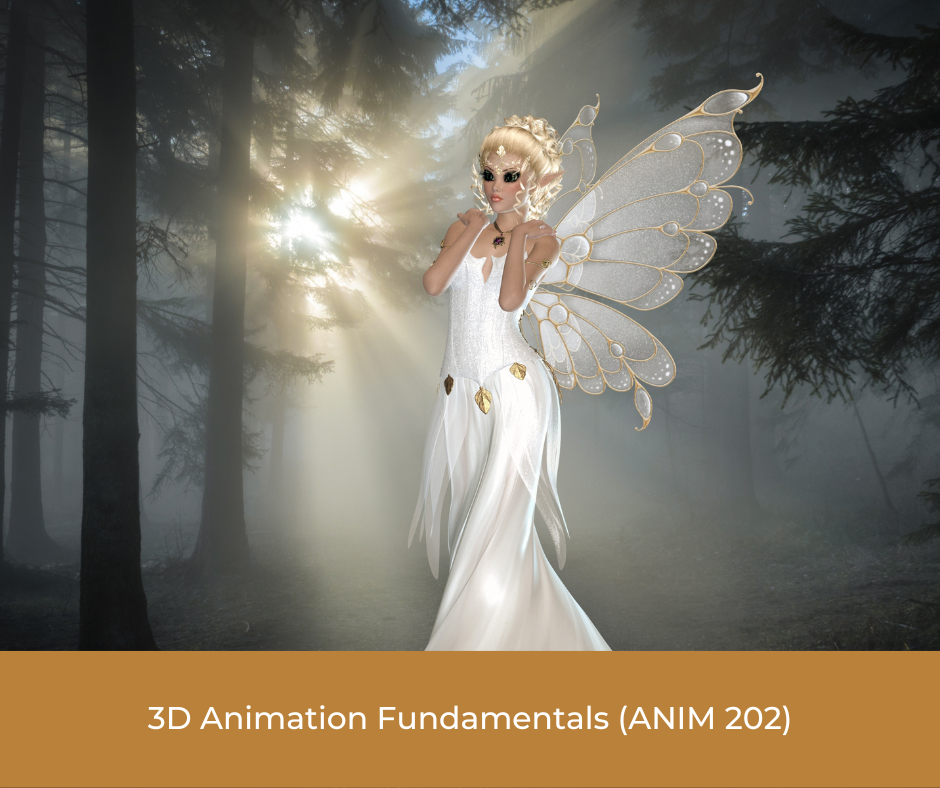Your cart is currently empty!
3D Animation Fundamentals (ANIM 202)

Course Description
3D Animation Fundamentals (ANIM 202) is an introductory course that immerses students in the exciting world of 3D animation. This course provides a comprehensive overview of 3D animation techniques, including 3D modeling, character rigging, and animation principles. Students will gain hands-on experience using industry-standard 3D animation software to bring characters and scenes to life in a three-dimensional space.
Outline of Major Content Areas
- Introduction to 3D Animation: An overview of the principles and concepts of 3D animation, including its applications in various industries.
- 3D Modeling: Introduction to 3D modeling techniques for creating characters, objects, and environments.
- Character Rigging: Understanding the process of character rigging, including skeleton setup, rig controls, and skinning.
- Keyframe Animation: Learning the fundamentals of keyframe animation and creating character animations.
- Physics and Dynamics: Exploring the use of physics and dynamics simulations to create realistic motion and interactions.
- Character Animation: Developing character animation skills, including walk cycles, facial expressions, and character interaction.
- Scene Composition: Techniques for scene composition and camera work to enhance storytelling in 3D animation.
- Rendering and Output: Rendering the final animations and preparing them for presentation and distribution.
Course Learning Outcomes
Upon completing 3D Animation Fundamentals (ANIM 202), students will:
- 3D Animation Skills: Develop proficiency in 3D animation techniques, including modeling, rigging, and character animation.
- Character Animation: Create engaging character animations, including walk cycles, expressive movements, and interactions.
- 3D Modeling Proficiency: Demonstrate the ability to create 3D models of characters, objects, and environments.
- Character Rigging: Understand the process of character rigging, including skeleton setup and rig controls.
- Animation Principles: Apply animation principles such as timing, spacing, and anticipation to create compelling animations.
- Physics and Dynamics: Utilize physics and dynamics simulations to add realism to animations.
- Scene Composition: Compose scenes effectively and use camera techniques to enhance storytelling.
- Final Animation Output: Produce high-quality rendered animations suitable for presentation and distribution.
Methods for Assessing Student Learning
Assessment in 3D Animation Fundamentals (ANIM 202) encompasses a range of practical assignments, animation projects, and knowledge assessments. These assessments include:
- 3D Animation Projects: Evaluation of 3D animation projects, including character animations and scene compositions.
- Character Rigging Assignment: Assessment of the character rigging assignment, including rig functionality and character movement.
- Modeling Proficiency: Evaluation of 3D modeling skills through the creation of characters, objects, or environments.
- Animation Principles Test: Assessing students’ understanding and application of animation principles.
- Physics and Dynamics Simulation: Review of physics and dynamics simulations to assess realism and effectiveness.
- Scene Composition and Camera Work: Evaluation of scene composition and camera techniques in storytelling.
3D Animation Fundamentals (ANIM 202) equips students with essential skills in 3D animation, preparing them for creative roles in animation studios, gaming companies, and the entertainment industry. Through hands-on projects and practical experience, students gain a strong foundation in 3D animation techniques and principles.